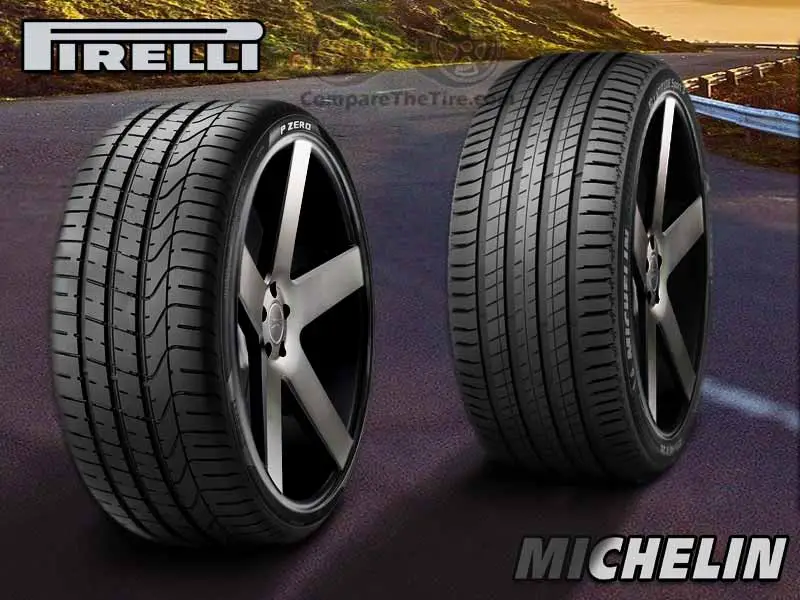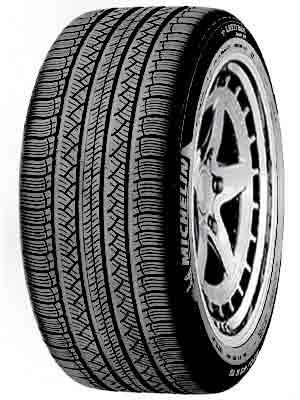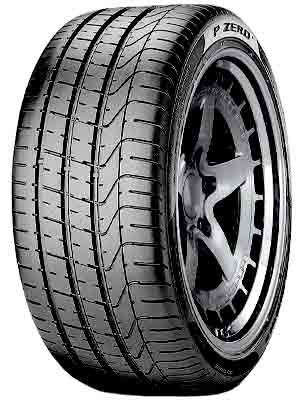Latitude Sport 3 is a performance tire designed for high-performance crossovers and SUVs. While on the other hand, P Zero is also a performance tire but manufactured for exotic sports cars. Both of them are summer tires which means they would slowly lose their traction abilities below 45o F.
The symmetrical tread of Sport is being designed with an innovative rubber compound to deliver an outstanding level of wet performance. Besides having better wet traction due to improved hydroplaning resistivity, Sport also offers enhanced fuel efficiency.

With an asymmetrical tread design, P Zero provides excellent wet and dry performance. But particularly its handling performance on dry and wet pavements is something that makes it exceptionally good. It provides a comfortable and quiet journey along with a high mileage performance. It gives its users the privilege of running the tire without inflation pressure in case of emergencies.
Compared to Sport, P Zero provides a better grip on dry pavements, superior wet and dry handling, enhanced durability, and a comfortable ride. But lacks behind its competitors when it comes to fuel efficiency, hydroplaning resistivity, grip on wet roads, and cost.
Table of Contents
Side By Side Comparison
Michelin Latitude Tour HP

Pirelli P Zero

| Specifications | Latitude Sport 3 | Pirelli P Zero |
| Tire Type | Performance Tire | Performance Tire |
| Tire Season | Summer Tire | Summer Tire |
| Tread Type | Symmetrical | Asymmetrical |
| Available Sizes, Inches | 17, 18, 19, 20, 21 | 17, 18, 19, 20, 21, 22 |
| Application | High-Performance Crossovers and SUVs | Sports Car |
| Uniformity Warranty | One Year | One Year |
| UTQG Rating | 220 A A | 220 AA A |
| Cost (235/50R19) | 242.08 $ | 288.5 $ |
Tread Design
Sport is having a symmetrical tread design with three ribs and four circumferential grooves. Having comparatively wide circumferential grooves increases the void ratio of Sport. All three of its ribs are inscribed with deep and dense siping, also including a circumferential sipe all over the length of each rib. It has comparatively smaller shoulder blocks but the lateral grooves on its shoulders are considerably wider than its competitor’s lateral grooves.
With an asymmetrical tread pattern, Zero is comprised of three ribs and four circumferential grooves. The adjacent circumferential groove to the external shoulder is comparatively much narrower than the rest of Zero’s circumferential grooves. That’s the major reason for Zero to have a comparatively lower void ratio. Unlike its competitor, it has no sipes on its tread blocks whatsoever. But it does have notches on its ribs and internal shoulder. The length of notches on its internal shoulder is comparatively larger than its ribs. It has comparatively massive shoulder blocks with moderate width of lateral grooves.
Road Grip
Having comparatively larger circumferential grooves makes the void ratio of Sport higher than its competitor, and conversely lowers its contact patch. That’s why it would have a lower grip on dry roads. But on wet roads, it would have far superior grip due to having high-density and deep sipes on its ribs along with a moderate contact patch.
Having one of its circumferential grooves too narrow impacts the whole void ratio of Zero. Fortunately, this increases its contact patch and Zero would have a better grip on dry roads. But without any sipes to protect the vehicle from hydroplaning makes its grip performance very poor on wet roads.
| Parameter | Latitude Sport 3 | Pirelli P Zero |
| Dry Grip | Low | High |
| Wet Grip | High | Low |
Road Handling
Since the shoulder blocks of Sport are relatively smaller in size and narrower in width, its dry handling would be lower than its competitor due to superior contact patch while maneuvering. Having a comparatively wider lateral grooves makes its steering operation on wet roads much better than on dry roads. But still, it would lack behind its competitor because of having relatively smaller lateral grooves.
Having twice as large shoulder blocks as its competitor, Zero would have a superior handling performance on dry roads because of an enhanced contact patch during steering operation. It may have comparatively narrower lateral grooves, but considering the length of Zero’s lateral grooves and its lengthy notches on shoulder blocks make its hydroplaning resistivity relatively higher than its competitor. That’s why it would provide a better handling experience on wet roads.
| Parameter | Latitude Sport 3 | Pirelli P Zero |
| Dry Handling | Low | High |
| Wet Handling | Moderate | High |
Hydroplaning Resistivity
Since Sport has a high void ratio due to its wider circumferential grooves, it would provide superior resistance to hydroplaning. Its deep & high-density sipes and wider lateral grooves would also contribute a lot to hydroplaning resistance along with its grooves. On the other hand, Zero would have a moderate resistance to hydroplaning in comparison to its rival. It’s because of its three wide grooves, notches, and lengthy lateral grooves. But it would still be inferior to its competitor in this regard.
Hence in this race, Sport would be the winner.
Durability Comparison
The durability of any tire simply depends upon its tread depth. The longer the tread depth, the longer it would take a tire to completely get depleted. By that definition, it is obvious that Zero would be more durable and last longer since its tread depth is comparatively greater than its rival.
| Contenders | Tread Depth |
| Latitude Sport 3 (235/50R19) | 8.5/32” |
| Pirelli P Zero (235/50R19) | 10/32” |
Comfort & Noise
Since the height/ depth of Zero’s tread is comparatively higher, it would have more space between the road and the steel belt of a tire. It provides a relatively more cushion between the road and the driver which ensures high absorptivity of shocks and bumps by the tire. It leads to providing a more comfortable ride.
At high-speed rates, air on the tread surface gets trapped inside the grooves & notches which creates a humping noise that makes the journey uncomfortable. With having a high void ratio, Sport would encapsulate more air in it and eventually would create more noise. This would make it a noisier tire than its competitor.
Hence, in this case, P Zero is the winner and would provide a quieter and more comfortable ride. Also, P Zero is equipped with the PNCS Technology (Pirelli Noise Cancelling System) which reduces noise inside the car by having a sound-absorbing device installed inside the tire.
Rolling Resistance and Fuel Efficiency
Due to the rolling resistance, a considerable amount of energy from vehicles gets wasted in overcoming the resistance. It is commonly known as hysteresis. And the hysteresis is directly related to the fuel efficiency since more amount of fuel would be burned in working against the hysteresis. The higher the contact patch of a tire is, the higher its rolling resistance would be which leads to low fuel efficiency. Since the contact patch of rolling is comparatively higher than its competitor so it would have comparatively more rolling resistance and conversely less fuel efficiency.
Hence, Sport is a better option from the viewpoint of fuel efficiency.
Load & Speed Comparison
The load and speed ratings, along with their respective values, of two same-sized variations from both contenders are being mentioned in the table given below.
| Contenders | Max. Speed | Max. Load | ||
| Rating | Value (mph) | Rating | Value (lbs.) | |
| Latitude Sport 3 (235/50R19) | W | 168 | 99 | 1709 |
| Pirelli P Zero (235/50R19) | W | 168 | 99 | 1709 |
By analyzing the given data, we can state that both of the contenders can endure an equal amount of load while running at a similar speed.
Quick Summary
Latitude Sport 3;
- is a summer performance tire, with a symmetrical tread pattern, designed for high-performance SUVs and crossovers.
- has a low grip on dry roads and a high grip on wet roads.
- has poor dry handling but somewhat decent wet handling.
- has a superior hydroplaning resistivity.
- provides enhanced fuel efficiency, and has low rolling resistance.
- is cheaper than its competitor.
Pirelli P Zero;
- is also a summer performance tire but with an asymmetrical tread pattern and manufactured for sports cars.
- provides a superior dry grip but inferior wet grip.
- provides excellent handling on both dry and wet pavements.
- is a more comfortable and noise-free tire.
- offers enhanced durability.


